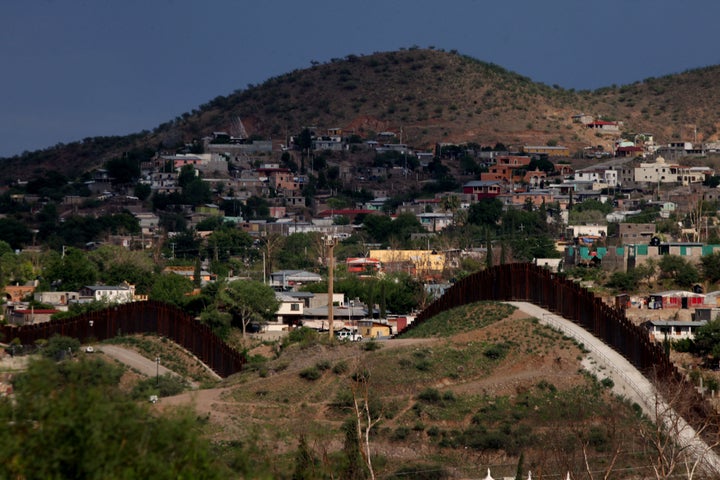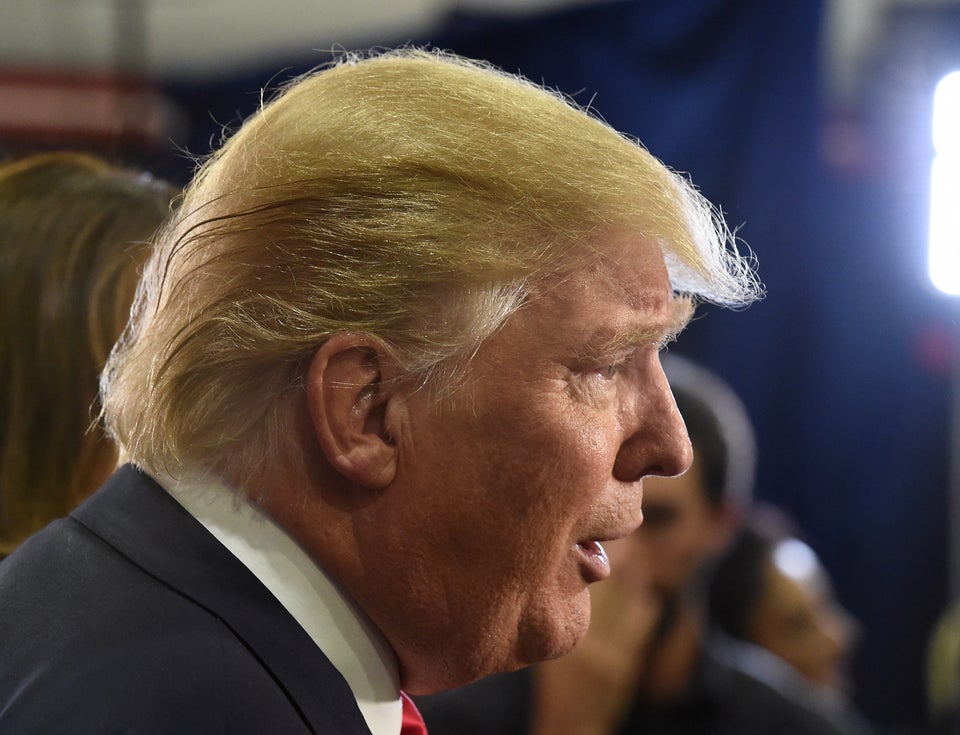President Donald Trump has promised a “big, beautiful wall” between the United States and Mexico and a massive crackdown on illegal immigration.
Now, Congress will have to decide whether to pay for it.
A flurry of executive orders released during Trump’s first few weeks in office ordered the Department of Homeland Security to come up with the plan to erect more border fencing, and to hire 5,000 Border Patrol agents and 10,000 Immigration and Customs Enforcement agents. The president wants authorities to scrap the so-called “catch and release” of recent border crossers, instead detaining every single person until they can be deported. Leaked memos obtained by MSNBC appear to indicate DHS is considering a plan to increase immigrant detention bed space by nearly 500 percent.
Any one of those policies would send DHS’ budget skyrocketing and saddle the department with decades’ worth of long-term costs. But neither the wall nor the personnel increases would do much to raise the overall level of deportations, many experts say ― which means Trump’s plans sound more like expensive wishful thinking than a blueprint for effective enforcement.
“It’s billions and billions and billions of dollars,” John Sandweg, the former acting director of ICE, told The Huffington Post. “It’s 100 percent not feasible under the current funding levels.”
The border wall alone, as proposed, would cost more than $20 billion, according to a DHS estimate. That figure already tops the combined annual budgets of ICE and Customs and Border Protection. Congress would have to fund such a large-ticket item outside the department’s normal budget requests.
But Trump’s proposed hiring binge could prove even more expensive. The salaries alone for 5,000 more Border Patrol agents and 10,000 ICE agents would add nearly $1 billion to the DHS annual budget.
And salaries are just the most obvious cost, according to Sandweg. Agents with both Border Patrol and ICE go through months of training. The agency’s academies would have to be expanded to accommodate thousands of new recruits. Once in the field, they would also need office space, weapons and vehicles ― all on the government’s dime.

Federal workers also receive generous benefits, including annual raises and pensions. So the costs of the added personnel would continue to balloon as time goes on. A Politico report from January estimated the additional 10,000 ICE agents would add some $3.9 billion to DHS’ budget annually. An undated CBP estimate puts the hiring costs at more than $2 billion over the next two years, a figure that includes hiring only a small portion of the proposed 5,000 agents.
“Every year the cost goes up,” Gil Kerlikowske, the last to head CBP under President Barack Obama, told HuffPost. “Health care. Retirement. Project that 15 years on. It’s a tremendous cost and one that continues well past retirement.”
Border Patrol hasn’t even been able to keep the staff it has a budget to pay for. Kerlikowske left office in January with 1,200 open positions needing to be backfilled. Finding qualified applicants who can pass security screenings and speak Spanish, and who are willing to live in remote border towns and accept salaries lower than those paid to ICE agents, is always a challenge. It’s an even more daunting task when unemployment is low and CBP finds its agents getting poached by other law enforcement agencies after a few years on the job, Kerlikowske said.
To speed the process along, DHS is considering adopting less stringent guidelines for hiring, Foreign Policy magazine reported last month ― a development that has some experts worried, given the agency’s vulnerability to corruption. An undated memo from CBP Commissioner Kevin McAleenan describes a plan to fill the open positions and hire the extra 5,000 agents over the next five years. But that optimistic timeline would require a 25 percent increase in the number of annual applicants. Making that happen would require still more money for outreach.
The memo, posted to the Border Patrol union’s website, recommends limiting the use of polygraph tests on some applicants, including some former police officers or members of the military, to get agents through the door faster. ICE doesn’t subject applicants to a polygraph test, the memo notes.
But relaxing hiring standards like the polygraph exam, the final step in the hiring process, worries some. A 2013 story by the Center for Investigative Reporting found that several applicants who’d passed every element of the hiring process went on to fail the polygraph exam because they admitted to committing crimes.
Several of these applicants confessed to trafficking drugs. One said he once woke up in a kitchen doused in blood, but couldn’t remember whether he’d committed a crime during the three hours he’d blacked out. Another applicant, Joseph Montross, admitted to owning a large cache of child pornography. Instead of joining Border Patrol, Montross, a former U.S. Marine, was prosecuted and sentenced to 30 years in prison.
“It’s billions and billions and billions of dollars. It’s 100 percent not feasible under the current funding levels.”
- John Sandweg, former acting director of ICE
Even the hiring process itself would cause logistical problems for the department. John Roth, the chairman of the DHS Office of Inspector General, told Congress last month that according to a recent audit, the department suffered from a lack of human resources staff and poorly organized systems for tracking and processing job applications. “In fiscal year 2015, it took an average of 282 days (over 9 months) to hire a Border Patrol Agent, measured from the time the job announcement closed to the date the applicant was hired,” the report says.
All that spending might seem justified if you’re determined to crack down on unlawful migration. But none of these multibillion-dollar, decades-long commitments are likely to have that effect, at least in the short term.
Both CBP and ICE are already well-staffed and arrest far more people on a daily basis than they can detain. Without sufficient detention capacity, agents would simply have to release many people they detain after serving them with orders to appear in immigration court.
The Trump administration has taken note of the bottleneck. The Department of Justice plans to send 50 immigration judges to detention centers across the country to help speed up the deportation process. But it’s unclear what difference that will make.
The immigration courts face a backlog of more than 540,000 cases, with only about 300 judges to hear them. While the National Association of Immigration Judges has pressed for years to double the number of judges handling these cases, they’re currently backfilling 73 open positions.
Sending more judges to detention centers wouldn’t automatically make those cases move much faster, according to NAIJ President Dana Leigh Marks. Defendants need time to find lawyers. They need to find people to testify on their behalf. They often need to obtain documents from foreign countries, a process that can take months.
“There is only so fast you can go and be consistent with the due process needs of the individuals in the courtroom,” Marks told HuffPost. “A judge has to balance the interest of the government with the rights of the individual to adequately prepare.”
All told, Trump is asking Congress to spend tens of billions of dollars on symbolic action that would likely have a marginal impact at best.
Trump may not be able to deport many more people than Obama, but his promised crackdown already appears to have made the enforcement system more erratic.
In the first major investigations operation carried out by ICE, roughly a quarter of the people detained had no criminal records ― a sharp departure from last year, when all but 8 percent of those deported from the interior of the country had either committed crimes that landed them among ICE’s enforcement priorities, or had been deported before.

